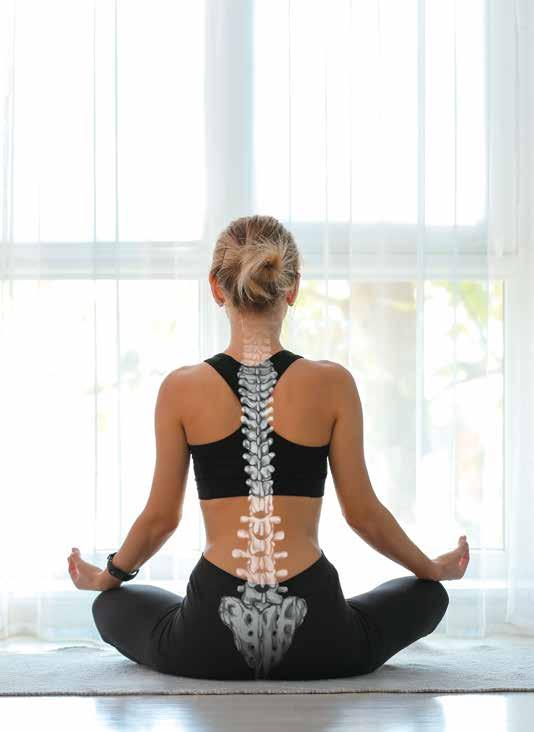
2 minute read
Straighten Up and Feel Right
Tips For Good Posture And A Healthy Spine
by Cristina Parker, PT, DPT
Advertisement
Standing up straight is not just something our parents remind us to do, it also happens to be good for our health. Posture describes the position of the body in space, but the realities of how we stand and move in day-to-day life are much more complex. Healthy postures encourage proper alignment of body structures, while unhealthy postures can lead to a host of issues, including muscle and joint pain, balance impairment and decreased mobility. Awareness of the body’s proper static and dynamic position is essential to maintaining a healthy spine.
The Spine and Its Role in Posture
The body’s main support system is the spine, which consists of three sections. The cervical spine supports the weight of the head and connects it to the shoulders, enabling us to turn our heads from side to side as well as up and down. The thoracic spine stabilizes the rib cage, which protects the vital organs. The lumbar spine consists of thicker, more robust vertebrae, as they are the main load bearers and enable us to rotate our bodies and bend forward and to the side.
Muscle tightness or joint immobility can shift the spine out of its ideal positioning, causing postural dysfunction. A recent study published in the journal Physical Therapy Rehabilitation Science estimates that 66 percent of the population is living with forward head posture (FHP), a cervical spine dysfunction that occurs when the head moves forward in front of the body. FHP can lead to headaches, migraines and jaw pain. Thoracic kyphosis, a rounded upper back, reportedly impacts 20 to 50 percent of the population and impairs numerous functions, including digestion and breathing. The lumbar spine is at particularly high risk for joint disease as both lumbar muscle strength and pelvic mobility decrease in sedentary individuals. Low back and pelvic immobility are contributing factors for the estimated 103 million individuals worldwide that live with lumbar spinal stenosis, a narrowing of the spinal canal that may cause pain or numbness in the legs.

Three-Step Process to Take Control of Our Posture
STEP ONE: IDENTIFICATION
In her book Rethink Your Position, biomechanist Katy Bowman recommends that we pay attention to a few common signals the body sends out to alert us to an imbalanced weight distribution, including aches in the feet or low back and tension of the shoulders or neck. “Good alignment isn’t about any one fixed position, but a healthy range of positions,” she says. “By focusing less on memorizing postures and more on learning about load on parts of the body, you can optimize your positioning for many different activities.”
Bowman recommends a quick and easy way to self-assess if a postural imbalance is present and, if so, to identify where the imbalance begins: “The body’s joints stack in a vertical line. You can use a plumb line to indicate where your parts are supposed to be. If you take a string with a weight at the end and drop it down from your shoul-









